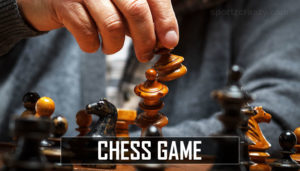The surge of Indian chess in recent years has been remarkable, with a proliferation of matches held at diverse locations. The establishment of well-structured channels that align with the dynamic nature of the sport deserves commendation. Additionally, the incorporation of chess into the core curriculum of certain schools stands out as an exemplary initiative that has significantly contributed to the sport’s popularity.
The credit for the meteoric rise of Indian chess extends to a multitude of stakeholders, including policy makers who have played a pivotal role in modernizing and elevating the sport to new heights. Their strategic decisions have not only increased the frequency of matches but have also brought about a positive transformation in the way chess is perceived and embraced across the nation.
Appreciation is due to the concerted efforts of those involved in the formulation and execution of policies that have facilitated the extensive reach and appeal of chess in India. The establishment of proper channels has not only enhanced the visibility of the sport but has also made it more accessible to enthusiasts from various backgrounds.
The commendable move by certain schools to incorporate chess as a permanent fixture in their curriculum deserves special acknowledgment. This forward-thinking approach not only nurtures the intellectual and strategic capacities of students but also contributes to the overall growth and recognition of chess as a mainstream educational pursuit.
The collaborative efforts of various stakeholders, including governing bodies, organizers, and educators, have played a pivotal role in shaping the narrative of Indian chess. The synchronized approach towards popularizing the sport has resulted in an increased number of players, heightened interest among the youth, and a surge in the overall competitive landscape.
The proactive stance of policy makers in aligning chess with contemporary trends and establishing proper infrastructures has positioned Indian chess on a trajectory of sustained growth. Their commitment to fostering an environment conducive to the development of chess talent reflects a broader vision for the sport within the national context.
As we acknowledge the strides made by Indian chess, it is crucial to recognize the collective efforts that have transformed it into a sport with widespread appeal. The modernization initiatives, coupled with the integration into school curricula, form a tapestry of strategic moves that have propelled Indian chess onto the global stage.
In conclusion, the rise of Indian chess is a testament to the foresight and dedication of numerous stakeholders who have contributed to its transformation. The synergy between policy makers, organizers, educational institutions, and enthusiasts has paved the way for a vibrant chess culture in India, setting a commendable precedent for the continued growth and success of the sport in the years to come.





